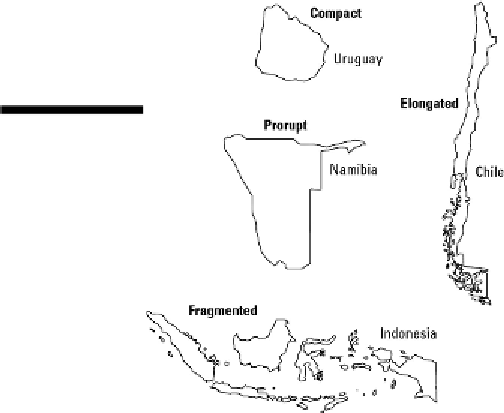Geography Reference
In-Depth Information
Figure 14-7:
Dif-
ferent shapes of
countries.
Compact states
A
compact state,
such as Uruguay, is roughly circular and is generally thought to be the ideal shape.
Assuming absence of mountain ranges or other physical barriers, parts of the country may be readily
interconnected with comparatively little investment in roads, railways, electronic cables, and so forth.
Also, compactness minimizes the amount of international border that may need to be defended, and
may also minimize the extent of internal ethnic boundaries as well. All in all, compactness tends to
promote internal cohesion.
Fragmented states
A
fragmented state
consists of scattered, disconnected pieces of territory, typically because all or part
of the country is a chain of islands. Indonesia is an example. Fragmentation makes it more difficult
for government to impose central control and to promote cohesion and interaction between different
parts of the country. Also, different fragments may be homelands of different ethnic groups that have
little in common.
Elongated states
An
elongated state,
such as Chile, is long and thin. In most cases this shape is detrimental to national
cohesion. Some places may be remote from the capital, a lot of border needs to be defended, and


